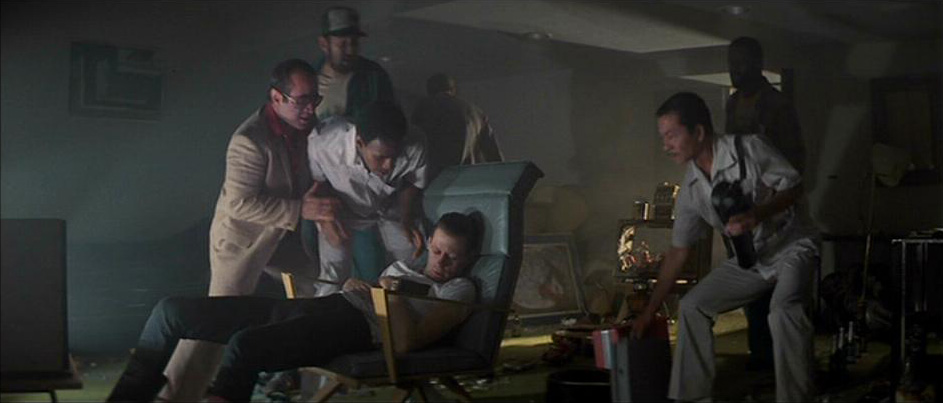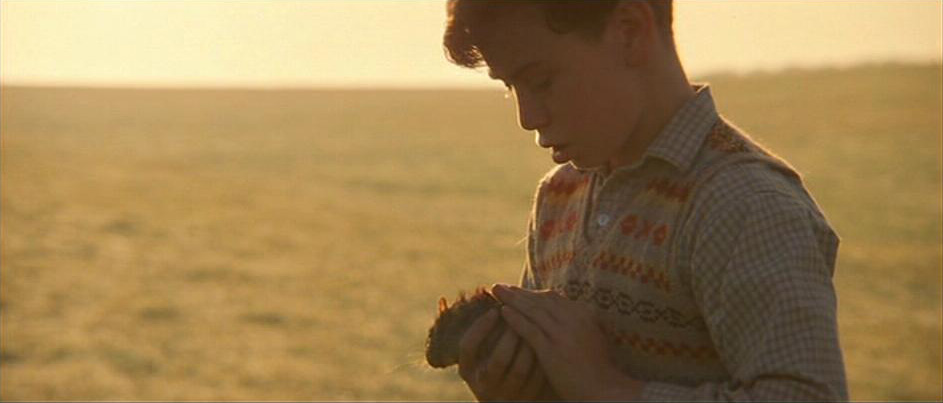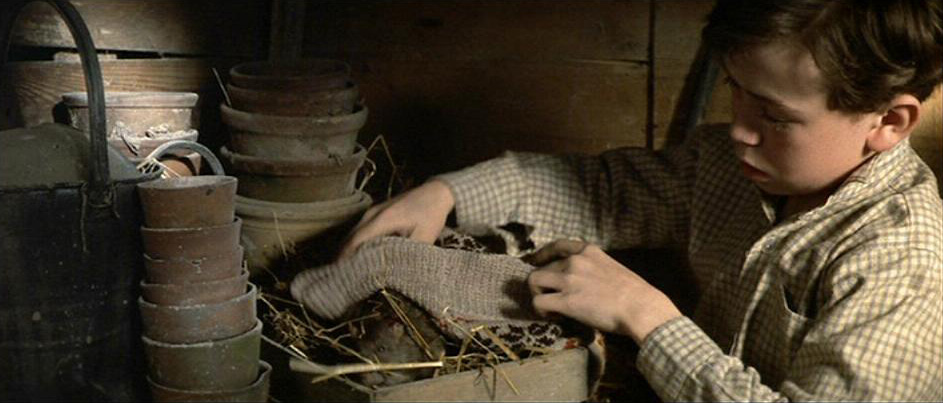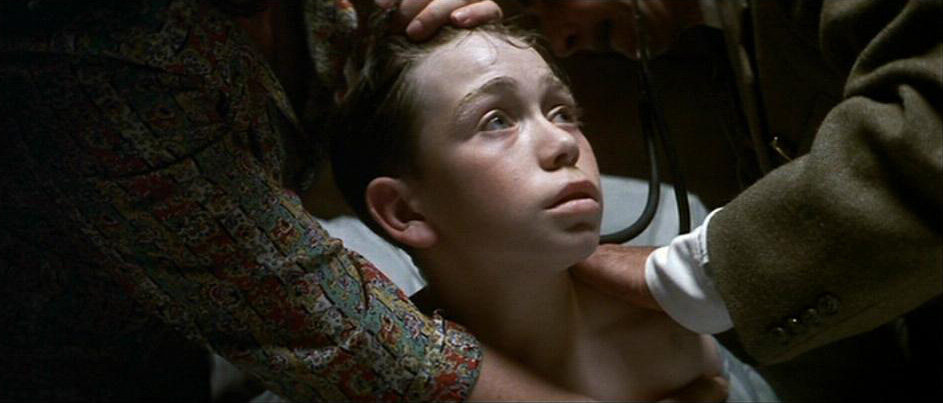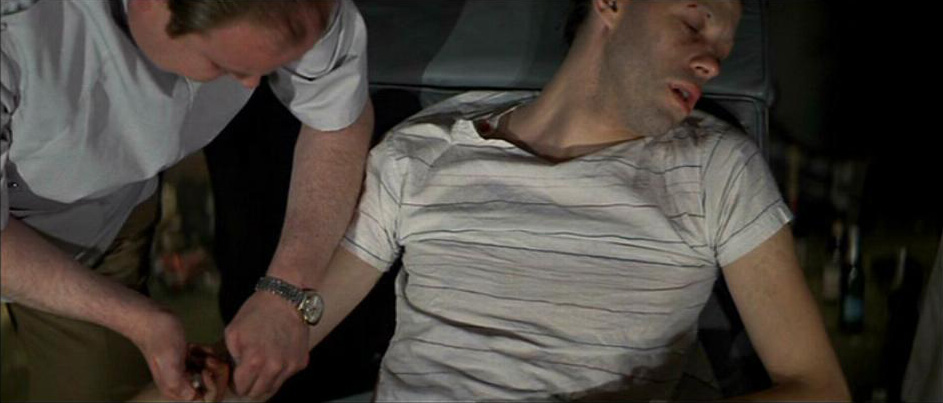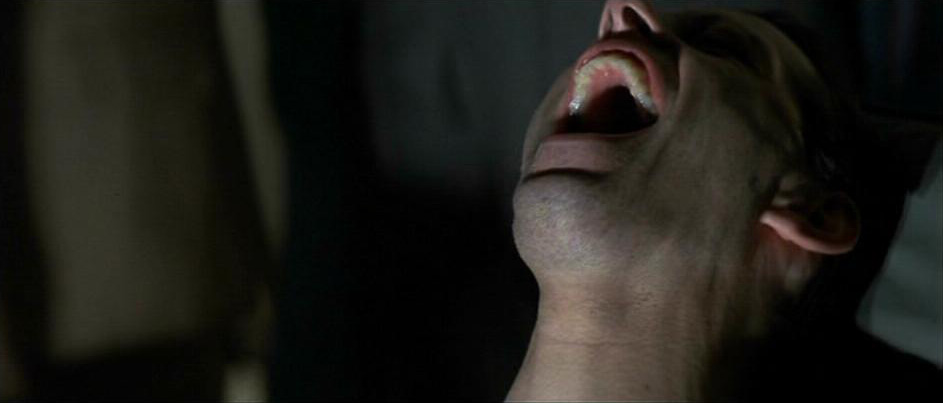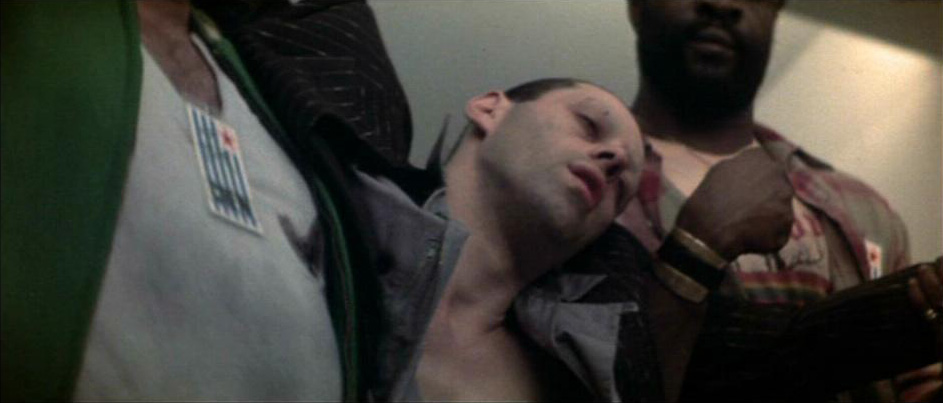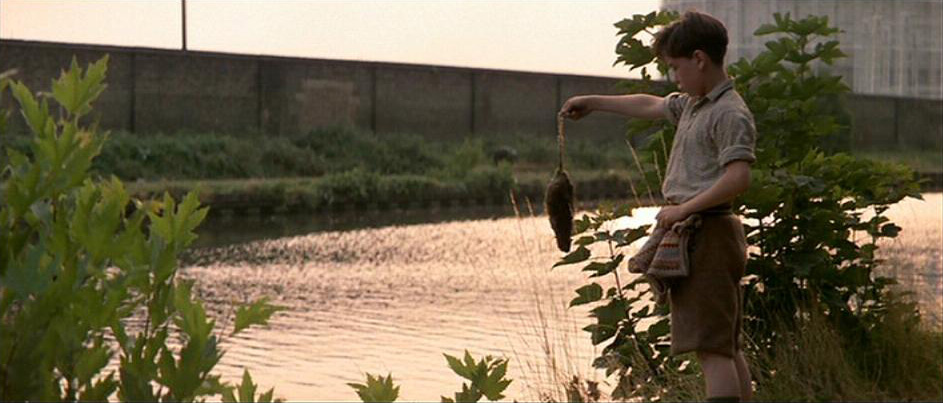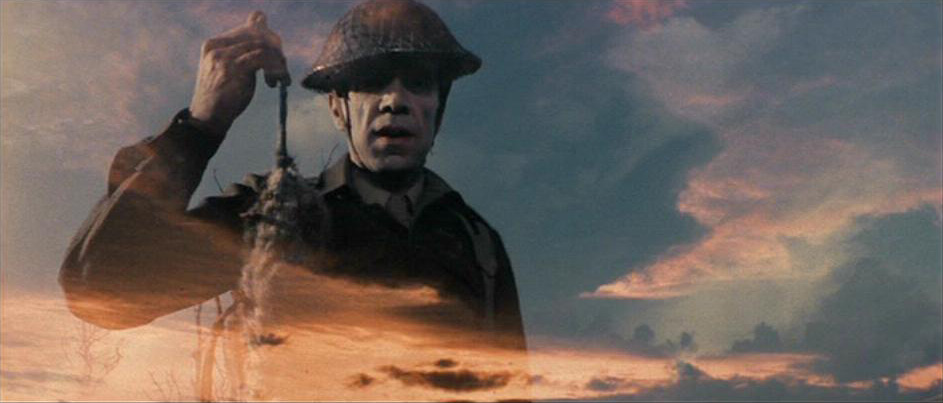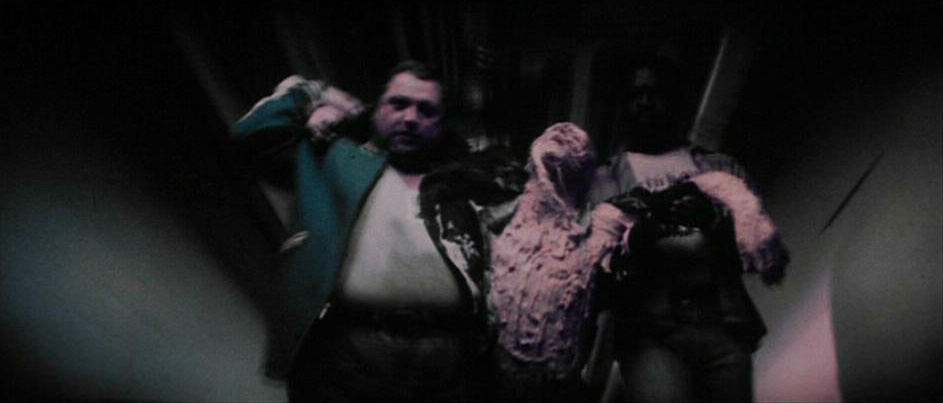Comfortably Numb
[Roger Waters]Hello, is there anybody in there?
Just nod if you can hear me.
Is there anyone home?
Come on, now, I hear you're feeling down.
Well I can ease your pain
And get you on your feet again.
Relax, I'll need some information first.
Just the basic facts.
Can you show me where it hurts?
[David Gilmour]
There is no pain you are receding.
A distant ship smoke on the horizon.
You are only coming through in waves.
Your lips move but I can't hear what you're saying.
When I was a child I had a fever
My hands felt just like two balloons.
Now I've got that feeling once again
I can't explain, you would not understand
This is not how I am.
I have become comfortably numb.
[Roger Waters]
Ok, just a little pinprick.
There'll be no more...aaaaaaaaah!
But you may feel a little sick.
Can you stand up?
I do believe it's working, good.
That'll keep you going through the show
Come on it's time to go.
[David Gilmour]
There is no pain you are receding.
A distant ship smoke on the horizon.
You are only coming through in waves.
Your lips move but I can't hear what you're saying.
When I was a child I caught a fleeting glimpse
Out of the corner of my eye.
I turned to look but it was gone
I cannot put my finger on it now
The child is grown, the dream is gone.
I have become comfortably numb.
Song In A Sentence:
Pink’s emotional journey into the past is both interrupted and heightened when his management breaks into the hotel room and has a doctor inject him with a drug that will snap him out of his drug-induced malaise, ensuring that he can still perform at a concert later that evening.

F or many fans, “Comfortably Numb” is the quintessential Pink Floyd song. The brilliant musical arrangements, haunting guitar solos, ethereal vocals and sweeping lyrics illustrate just why this band is considered one of the best in the history of rock music. Yet not only is the song an important number in the Floyd catalog but it is also arguably one of the most important songs in the album’s second half in terms of both narrative and theme.
Following Pink’s final question (“Is there anybody out there?”) at the end of “Bring the Boys Back Home,” “Comfortably Numb” begins with a moody bass, spartan drum beat, and wavering guitars, a musical representation of Pink’s drifting consciousness and his hazy realization of being spoken to from both outside of his mental wall and inside the physical one of his hotel room. Curiously, the lyrics begin with an inversion of Pink’s previous question, with Roger Waters acting in the guise of a doctor who, as interviewer Tommy Vance described, is brought in by the manager to put Pink “in such a physiological state that he can actually hit the stage” later that night. In the same interview, Waters went on to describe the song as Pink’s “confrontation with the doctor,” alluding to the tension between the outter and inner worlds that is set up right from the beginning. “Hello? Is there anybody in there?” the doctor asks, unknowingly juxtaposing the phrases of “out there / in there” and thereby highlighting the separation between the reality of the outside world and Pink’s dream-like inner sanctum. As if in answer to Pink’s repeated questions, the sudden appearance of the doctor’s voice assures the listener and Pink that yes, somebody is “out there,” though as we’ll find out the “help” he brings isn’t exactly the kind of communal salvation from his wall that Pink had in mind.
The doctor goes on to ask if there’s “anyone home?”, ironically mirroring Pink’s own existential questions about his own sanity in “Nobody Home,” as well as hinting at his journey to reevaluate his “fading roots,” which has been abruptly interrupted by the intrusion of the doctor and other outside (“out there”) forces. Although the rest of the first verse is nothing out of the ordinary for an initial examination, the doctor’s comments are laced with a certain significance that draws attention to the lyrical conflict of which Waters’ spoke. That Pink is “feeling down” is something of a comical understatement, with the subsequent assurance that “I can ease your pain and get you on your feet again” harking back to the very root of the wall – Pink’s desire to ease himself from the pain of life. Just as Pink was reaching some sort of epiphany in his journey to reclaim his roots, the outside world bursts in and unwittingly promises to dull the pain with which he was trying to connect. To bookend the irony, the doctor concludes the verse by asking Pink to “show me where it hurts.” For Pink, the truth is that it hurts nowhere and everywhere; that is, the pain is not physical, not something that can be pointed out, poked at, and remedied. Rather, it is deeply seeded within his mind, buried at the core of his being.
“There is no pain. You are receding,” Pink sings in answer to the doctor’s questions, hitting upon the fact that his current state is the product of the emotional – the existential, even – rather than any physical pain. The rest of the chorus reflects as much, his mind shifting back and forth between the present and past, his wall (and the drugs running through his system, no doubt) keeping all the external stimuli at a distance, causing everything to come “through in waves.” The world is dulled for Pink. In his perspective, everything is like some ephemereal “distant ship’s smoke on the horizon,” an image that is as enigmatic as it is eloquent. Many take the line about the ship as a description of the outside world, assuming that the “You” (the doctor / the world) of the previous line is still the subject here. Some might posit that the lyric is also an apt metaphor for Pink’s feelings of isolation and helplessness, as if he is the ship adrift on the sea with help visible but equally out of reach. Inasmuch that water in both literature and the Wall often symbolizes the mind, especially the uncharted depths of the unconscious, the ship becomes a symbol of Pink himself…or rather, that last bit of sanity to which he’s been desperately clinging throughout the album’s second half, overwhelmingly isolated by the fathomless oceans of his own mind and in danger of sinking. Others have suggested that it is an actual childhood memory, and that Pink’s mind is lapsing between the present and the past as a result of being interrupted from his regression by the manager and doctor. Another possibility still is that the lyric symbolically portrays the very root of Pink’s disorder. In songs like “Southhampton Dock” on the followup album the Final Cut, Waters used ship imagery to symbolize the sacrifice of English soldiers during World War II. Applying this same idea to “Comfortably Numb” and Pink’s story, it’s easy to see how the ship on the horizon could symbolize the absence of Pink’s father, something that has constantly hovered on the horizon of his son’s mind.
From here Pink regresses further back into his mind, and more specifically to the childhood memory of an illness briefly alluded to in “Mother” and “Nobody Home.” Though the particulars are never given, that remembered sickness acts as a link between the innocence of his past and the dejected state of his present, with his hands feeling swollen “just like two balloons” then as they do now. As a child, the feeling was brought on by a fever; now, arguably, by the disorienting effects of the drugs and his mental bricks. Such disorientation is further highlighted by his inability to really express himself and his predicament, ulimately causing him to simply utter “I can’t explain, you would not understand. This is not how I am,” the last line of which is often perceived as self-delusion. The fact of the matter is that this is how Pink is. He has been this way since he was a child; with the construction and completion of his wall, this is how he has remained. From all that the listener has learned, Pink has nearly always been distant, uncommunicative, and disordered (at least from early adulthood). While he might view his recent pitfalls as new developments in his life, the audience knows better, and can conclude that these recent occurrences are merely the recycled experiences of his past. Pink has been in this state before (as evidenced in the young / old parallel of his “swollen hand blues”) and will continue to remain here until he destroys his wall and progresses into life without being “comfortably numb” – that is without dulling the pain and past trauma by whatever means necessary. And yet there might also be some truth to his statement, with that aforementioned sliver of sanity calling out as he slips further and further away that despite the drug addict rock star disguise, the real him is still there beneath the surface. An interesting dichotomy is thus created in which Pink is torn between self-realization and self-destruction, between his emerging dictator persona and the self calling for those “out there beyond the wall..[to] help me.” Accordingly, the chorus’ final, repeated line of “I have become comfortably numb” can convey any number of things, depending on which of Pink’s personas one interprets as delivering the line. If that last sane bit of self, then the line could be something of a lament for letting himself get to the state he’s in; if another part of his increasingly deluded self, then it could be seen as a statement of victory relishing in the fact that he is still “comfortably numb” even as the external world tries to break through and reconnect with him.
After a brilliant guitar solo, the doctor is back in the second verse with a shot that is supposed to revive Pink from his drug-and-wall induced trance and keep him “going through the show.” There has been a lot (a lot!) of debate over just what, exactly, this “pinprick” is. Some suggestions include: Noxolone (aka, Narcan), a drug used to counter the effects of heroin overdose; Thorazine, used to bring people down from acid trips; a mixture of amphetamines (to increase wakefulness) and cotricosteroids (to aide in stress response). Each possible pinprick is entirely based on just what drug one believes Pink is high on in the first place, with suggestions for those ranging from heroin to LSD, ketamine to DXM, all of which are known for the dissociative hallucinations they can cause. The particular shot and the doctor’s specific remedy aside, what’s narratively important about the pinprick itself is that it becomes something of a brick itself. Rather than helping him along in his inner journey towards self-awareness, the shot is yet another means of hammering him into a mould, another means to controls him and keep him “going through the show” (the concert) so that the managers, promoters and record executives can turn a profit. As Roger Waters says in his 1979 interview, “they’re [the managers, etc.] not interested in any of these problems. All they’re interested in is how many people there are and tickets have been sold and the show must go on, at any cost, to anybody.” Once again, Pink finds out that there are people “out there,” yet those who find him at this time severely reinforce his wall rather than help deconstruct it.
Then again, there may be a touch of the ironic unfolding to the pinprick. Since the first line of “In the Flesh?” we’ve noted that “the show” serves double-duty as a reference to both Pink’s concerts as well as life itself. Running with the second meaning, the shot does indeed resuscitate him from his drug-induced stupor, which in turn reconnects him with the physical world. Whether the interruption of his metaphysical regression started in “Vera” is a good thing or not is debatable. One could easily point to Pink’s dictator persona as a byproduct of this sudden disruption, though others could just as easily argue that the emergence of Dictator Pink was imminent, meaning that the doctor’s shot catalyzed this fascist self’s fruition as well as the subsequent epiphany that destroys Pink’s wall. The line between existential albatross and deus ex machina is notably, and quite possibly intentionally, blurred.
Pink enters the song once again with the second chorus, this time recounting that as a child he “caught a fleeting glimpse / out of the corner of my eye.” By now one should realize that there is hardly a single lyric on the Wall that can’t be interpreted in a number of different ways, and Pink’s “fleeting glimpse” is no exception. Because the line is so ambiguous and surreal the listener isn’t sure whether that glimpse was of something good, bad or in between. Nor does our narrator help matters, going on to sing that “I turned to look but it was gone. / I cannot put my finger on it now,” as if he’s just as confused as the rest of us as to what he saw. Rather, we’re left to fill in the gaps with our own opinions and experiences.
For some, Pink’s childhood “glimpse” was a sudden realization of what the world really is – walls, personal suffering, masks and all – his childhood naivete momentarily stripped away. Or perhaps he glimpsed what he would become, something like the meeting of selves as visualized at the end of the movie sequence of “Nobody Home.” In light of his childhood illness mentioned in the first chorus, he might have caught his own mortality out of the corner of his eye – that realization that his life is just as transitory as his father’s. Then again, the glimpse could have been of innocence itself, that state of unworried abandon of which he feels he was robbed due to his father’s death and mother’s over-protection. Even as a child that glimpse of what a normal life would have been was fleeting, always beyond his vision and his grasp. Whatever it is Pink glimpsed, and now only vaguely recalls as an adult, is quickly replaced by the sobering reality that “the child is grown, the dream is gone.” It’s an unsettling realization that, no matter what he glimpsed – whether hope or warning, life or death – it all led to the same present, to him being “comfortably numb.”
While David Gilmour’s first guitar solo in “Comfortably Numb” is effortlessly paced, dreamlike in the phrases that develop out of his long, sustained notes – an appropriate reflection of the simultaneously searching yet surreal state Pink is in – the second guitar solo is noticeably more embattled, with most of the licks alternating between the guitar’s higher and lower registers. Whether a result of the doctor’s injection or the external world’s abrupt intrusion, the Pink represented by the second solo is undoubtedly at war with himself. Unlike most of the songs on the Wall, “Comfortably Numb” fades out to silence rather than coming to a singular end or merging seamlessly with the next song. The implication is that Pink’s inner quarrel, his battle of selves, rages on, soon coming to a head in the manifestation of his most deranged persona yet.
True to the ethereal quality of the song, the movie sequence for “Comfortably Numb” is a symbolically complex piece alternating between the present and past. Though the episode starts ordinarily enough in faithfully depicting the first verse in which the external world (Pink’s manager, hotel employees, medics and the doctor) break into the room to find the rock star in a drug-induced stupor, the transition into the trippy first chorus is equally realized with a scene that’s become very familiar by now. As Pink sings of his childhood memories, the screen is filled with the repeated shot of Pink running across the rugby field and stopping in front of the camera. Just as “Goodbye Cruel World” expanded this same shot from “When the Tigers Broke Free, Part 1,” “Comfortably Numb” continues the sequence past its predecessors, showing Pink from another angle as he circles a spot on the ground, and then bends to pick up a wounded rat from the grass. Pink carries the rat home, shows it to his mother, and is quickly shooed from the house. Taking it to a little shack beside a canal, he places it in a makeshift bed of straw and carefully wraps his sweater vest around the injured creature. Before the second verse begins, there is a quick shot of Pink’s mother superimposed over the sky of Pink’s alienated wasteland (that barren landscape first depicted in “Nobody Home”). No longer the plain woman depicted in earlier sequences, she is now a larger-than-life, almost godlike figure spanning the limitless sky.
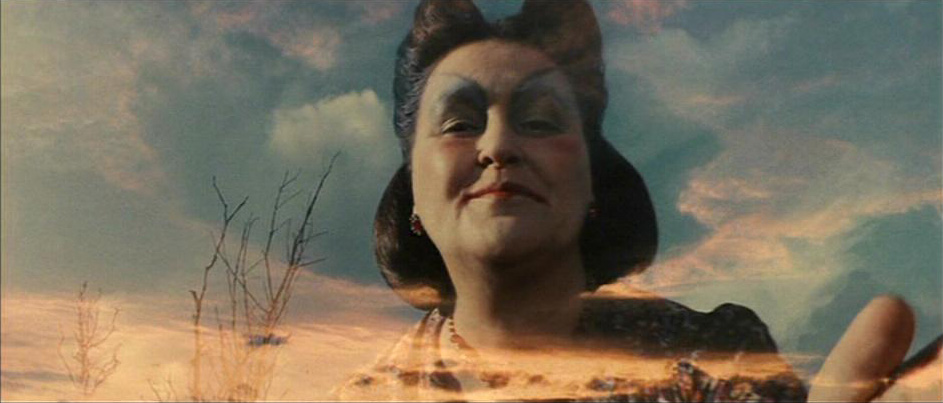
Soon after we revisit a shot first used in “Mother” in which young Pink is being examined by a doctor. Whether the illness was contracted from the rat or not, the fever and disorienting feelings offer a nice dichotomy between past and present, between a Pink who arguably got sick from trying to help out another creature, and one who’s brought on his mental illness through his own self-centered actions. Interestingly, as the scene shifts back to the present with the doctor administering his “pinprick,” the older Pink yells well after the needle pierces his arm, causing one to wonder if his screams are more in response not to the present pain of the injection, but to his childhood memories and all that they might embody to the shell of a man he has become.
At the second chorus, young Pink returns to the shack only to find that the rat is dead. After a shot of him dropping the animal’s carcass into the canal, a line of people walk through Pink’s mental landscape. All of his emotional bricks are there, his father, wife, school teacher, as well as the anonymous soldiers that peopled his war dreams; all are as theatrically made-up as the mother, features exaggerated to fully convery the looks of accusation, menace, and pity as they pass. Each has contributed in some way or another to the mental wasteland lying below, creating that emotional barrier that has kept him from truly chasing after that “strong urge to fly” into the limitless sky, both as a child and adult. That these ghastly figures are the basis of Pink’s metaphoric bricks is easy enough to parse, but what of the aforementioned rat? Since posting my original analysis back in 1997, a large number of people have written me about this very subject. Whether asking me to expound further or sharing their own opinions, the rat seems to have taken root in the collective minds of the Wall’s audience in much the same way as it has in Pink’s own subconscious.
Roger Waters states on the DVD commentary that, like Pink, he took home a rat that he found on a rugby field, caring for it in his garage until it died a few days later. Though it would be easy enough to write off the scene as yet another autobiographical touch to Pink’s fictional story, that Pink returns to this memory time and again throughout the movie speaks of a deeper symbolic significance possibly connected to that ambiguous “fleeting glimpse.” Being that Pink’s father carries the rat as he walks through the wasteland in the earlier shot, many feel that the rat represents the father, or at least an object of displacement for the adolescent’s feelings of loss and abandonment…feelings that he quickly sinks into the murky depths of his subconscious, much like the rat into the watery ditch. Another interpretation parallels the rat with Pink, its sickness and helplessness mirroring the child’s own childhood illness and dependence. Others suggest that the rodent represents, in a way, Pink’s youthful dreams, seeing the mother’s rejection of the rat as symbolic of her rejection of Pink’s individuality. Unable to foster these hopes alone, Pink soon represses his feelings for personal autonomy by dropping them into the fathomless waters of his subconscious.
Yet even if the rat is just a rat, and is not specifically symbolic of any one person or relationship, why, out of a lifetime of repression, does Pink habitually return to this one memory? Taking into account all that we’ve seen of Pink’s life, the incident with the rat appears to be one of the only times in his childhood (perhaps his entire life) in which he connects emotionally with another living being. Though he grieves at the loss of his father, his grief is more for an ideal – that of a stable family milieu – rather than for the actual man whom he never personally knew. And while there’s no doubt that he loves his mother, it’s a love that’s tempered by her hawkish overprotection, brought on by her own feelings of loss and abandonment. In Pink’s mind, both relationships are those in which something is taken away (emotionally, individually, etc.) rather given. Yet out of his childhood innocence, Pink gives himself to this injured and helpless animal, sacrificing his time and even the clothes off his back for the welfare of a creature that most, like his mother, automatically reject. Perhaps he sees a bit of himself in the rodent, his own psychically injured and alienated state. Or perhaps he projects his hopes in life onto the creature, wanting to believe that life is more than the flimsy disguises about which he was taught in “the Thin Ice.” Whatever the rat is to Pink, the connection he makes with it seems to be deeply rooted, enough so that it is one of the most dominant memories in his mind years later.
All of which begs the question as to whether the memory, like the enigmatic “fleeting glimpse,” is something of a response to the wall and his current mental state or another deeply ingrained emotional brick, one that is as central to the foundation of his wall as his father’s death? In other words, does this memory reinforce for Pink the harm inflicted by his wall or the need for it? Not surprisingly, both sides can be argued rather convincingly. By the first interpretation, the repeated memory could act as an unconcious reminder to himself that he was, at one time, capable of giving love. Even though this brief connection with another living creature ended in the rat’s death, this act of youthful giving undermines the egocentric self created by his defenses. Despite his “I don’t need no arms around me” bluster, Pink realizes that at his core there is a still a redeemable innocence. That is unless one is inclined to take the more pessimistic view, which would argue that the memory of the rat reinforces Pink’s oft mentioned notion that all relationships end in ruin. Possibly tipping the balance between young Pink’s youthful innocence and adolescent / adulthoood distrust, young Pink’s giving of himself ultimately ends with rejection (by his mother) and death (of the rat). It is the childhood epiphany, the possible “fleeting glimpse,” that reinforces the idea that life only leads to pain, loss and death, thereby justifying the (then) construction of and (now) completion of his wall.
In response to the painful memories of loss and death and the hallucinatory procession of the living bricks across his mental wasteland, Pink retreats farther behind his wall and further into decay. As the concert crew members carry him down the hall, the flesh on Pink’s arm forms a fleshy cocoon that spreads to his chest and face, finally encapsulating his entire body. (It should be quickly noted that many feel this sequence is a direct reference to original Floyd frontman Syd Barrett, who used to mix quaaludes with his hair cream before taking the stage. As the concert progressed, the drugs would slowly seep into Barrett’s skin and the cream would melt over his head, making him look like “a guttered candle” as Roger Waters reflected.) The lights of the hallway distort as the crew drags the pulpy Pink chrysalis down the stairs and into the awaiting limousine. In the back seat of the car, Pink tears at the flesh of his melting face, an image reminiscent of the faceless masks worn by the children in “Another Brick in the Wall, Part 2.” For the most part, Pink has been formed by the events of his life and the people who have populated it. He has taken on the identity of all those who molded him. The loss of his father; the watchful, paranoid eye of his mother; the stricture of his teacher; the infidelity of his wife; the ignorant ardor of his fans; Pink has allowed all of them to shape him into the faceless, identity-less mass sitting in the back seat of the limousine. In his mind, he has been acted upon all of his life.
Until now.
When Pink finally breaks free from his shell, he sits in marked contrast to the selves that came before. He is calm, collected, and totally focused…a sight made all the more eerie by the black, Nazi-inspired uniform. The conflicting sides of Pink that called out in multiple voices in “Is There Anybody Out There” have fully united into the figure that sits without expression in the car’s back seat. All the pain, all the hatred, all the feelings of loss and disillusionment; every negative emotion that has been repressed within the murky canal of Pink’s mind rises to the surface, born into this newly awakened incarnation.
In terms of the movie song order, the reign of Fascist Pink is at hand.
What Other Floydians Have Said
"In the part when we see all the 'bricks in the wall' passing by the canal at Pink's childhood home, notice how everybody's eyebrows are arched and somewhat evil looking. Do you think that maybe Pink shaved his eyebrows to avoid looking like the 'bricks'?" - Sarah C.
Author's Addendum: One has to wonder what it is exactly about eyebrows themselves that would a.) make Pink shave his off and b.) make him hallucinate exagerrated eyebrows on his "bricks." It's really interesting how something so small and seemingly inconsequential as eyebrows can make a huge difference in appearance. Just take a look at Pink after he shaves off his body hair...there's something distinctly, I don't know, alien about hisappearance. (Not space-alien, per se, but alien as in apart from human). Maybe that was Pink's intention...the eyebrows are a sort of synechdoche for humanity, or rather, humanness. All of Pink's crazy-eyebrowed bricks have definite human emotions and motives...the mother was too protective, the teacher vindictive, the wife unfaithful (and so on). So maybe Pink's act of shaving his eyebrows (and body hair) was an attempt to make himself inhuman, and so not ruled by the emotions and, ultimately, mortality that man is subject to.
"When I was a child I had a fever, (as we all have), but when I was terribly sick such as with the flu and the accompanying 102 [degree] fever, I had 'fever dreams'. I still have them today, though less frequent. Fever dreams, in my definition are more vivid and infinitely more horrific than your worst nightmares. I can still remember them very clearly. In these dreams my hands would blow up into huge balloons and I would watch them grow and grow until they took up all the space for me to breath. Just the thought of this give me terrible anxiety. And as the lyrics go, I've always heard myself saying upon explanation, 'I can't explain, you would not understand.' I've never been able to place this image into the rest of the song and make it fit, I don't know how he was feeling. But when someone says anything about fever and hands feeling like balloons, I know exactly what they mean." - Tiffany B.
"In your analysis of 'Comfortably Numb' you interpret the lines, 'when I was a child, I had a fever, my hands felt just like to balloons,' to be describing an illness Pink has as a child, attributing the feelings in his hands to the fever and later in life, to drugs. After a few viewings of the film, however, I came up with an interesting different theory, one which I thought you might appreciate: Pink sings the lines at the precise moment that he sees the rat on the field. I thought that perhaps his 'fever' was not an illness at all, but what he calls this flashing, noble passion for helping another living thing, a cause he devotes himself to, to an almost martyr level--his 'fever,' if you will. The next lines, 'my hands felt just like to balloons,' are simultaneous with Pink scooping up the rat and carrying it in a very responsible, caring way, back to his home--and while this may seem too far-fetched, I would guess that he is referring to the completely unique, beautiful feeling that even goes so far as to tingle in his hands as he takes on the rat as is own, loving it as he has never a being before. The rest of the lines of the verse, 'Now I've got that feeling once again. I can't explain, you would not understand, this is not how I am. I have become comfortably numb,' seem to fit with my theory easily enough; through his dreaming and soul-searching (and maybe the unanticipated effects of the drugs the doctor gives him), Pink suddenly remembers this time and is filled with the same feelings of hope and compassion he did then, remarking that his doctor, manager, etc., 'would not understand,' because that's really not how he has been most of his life, having been devoid of such feelings--after suffering the loss of them, he has become comfortably numb to their presence or absence, save for this brief moment of clarity and memory." - Matt Webber
"In 'Comfortably Numb,' there's a scene in which the manager and doctor are having an argument over the virtually-lifeless Pink. Because the audio of the argument is momentarily allowed to fade up over the music (as it were, 'coming through in waves') you don't need to be able to read lips to know that the manager is telling the doctor that Pink is an athsmatic, and that the doctor plainly doesn't believe him, but that the wad of cash that the manager produces quickly silences the doctor's objections to the manager's obviously-corrupt 'diagnosis.' The needle, therefore, would have contained an injection intended for an athsmatic -- likely a mixture of a stimulant (usually an amphetamine such as ephedrine,) coupled with a corticosteroid. Amphetamines increase the heart rate and open the passages of the lungs, while corticosteroids reduce the inflammation that might be found in an athsmatic's lungs, while acting as a secondary stimulant and producing increased energy levels and a somewhat euphoric feeling. In other words, the manager had crafted his lie specifically to get the doctor to prescribe a concoction that would wake Pink up ('get [him] on [his] feet again'). This intention is further reinforced by a lyric in the second verse, 'Can you stand up? I do believe it's working. Good -- that'll keep you going through the show. Come on, it's time to go.' The absolutely corrupt and callous nature of the behavior of both the manager and the physician, two people that nominally exist to watch out for the artist's better interests, is about as bare-knuckled a statement as can be made about the people that Pink has by now surrounded himself with, who form yet another brick in the wall that he has erected around himself to insulate himself from the rest of the world. Far from being the friends and protectors that they portray themselves to be, they have only one interest in Pink -- he is their meal ticket, and if he doesn't go on with the show, nobody's going to get paid. Therefore, they conspire amongst themselves, (smoothing over their respective moral and ethical qualms with the universal lubricant [money]), to get Pink to stand erect onstage, even if it means that they kill him in the process. (After all, if he dies onstage from the combined effects of the drugs that he's taken and the drugs the doctor admisters, the value of his name, his image, and his catalog will rise exponentially the very next day -- either way, his manager will be either a little richer or a LOT richer the morning after this concert. Compared to this and what he stands to lose if Pink doesn't show, the expense of buying off the doctor is chump change.)" - Gos
"In the 'Comfortably Numb' sequence Pink is gradually covered by a mass of worms. Another possible interpretation of this is that many habitual drug users, especially users of cocaine or even more so amphetamines, often suffer or begin to suffer from delusional parasitosis, which is the belief that the sufferer is infested with parasites...a symptom of which can be the belief that the parasites (insects, snakes, etc.) are crawling over the skin. This is why meth users often have pockmarked faces--they've been desperately scratching at themselves. That is also how I read the beginning pool sequence, where Pink is floating and then he thrashes about and claws at his face and the pool goes pink." - Anna Vanha


